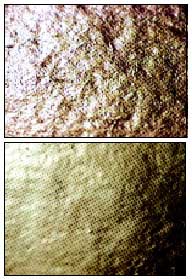Apply Ultraviolet (UV) Coating to General Ink (2)
Ink
Offset inks mainly contain pigments, vehicles, diluents, and additives. The ink is applied to the substrate in the form of water, ink, or film. When the pigment component increases, the same chromaticity can be achieved with less ink. After printing, the "inhalation and coagulation" ink components dry in a matter of seconds, but oxidation drying takes hours or even days to complete.
Choosing the right ink is very important
The ink has two undesirable effects on the coating layer:
(1) Because of the ink coverage, the printed part of the printed sheet, the moisture of the diffusion coating used for the primer cannot be fully absorbed, and the degree of mixing of the coating and the ink is affected. The condition depends on the flow resistance (viscosity) of the both. .
(2) The newly applied ink starts its drying process and continues to be performed even if the second coating (UV coating) finally added is firm. In this case, the primer layer is deformed, and the flaw may be affected by the object released during the oxidation drying. These interactions reduce the gloss and destroy the bond.

As mentioned above, due to the mutual relationship between the two, the degree of gloss of an ultraviolet (UV) coating depends very much on the type of ink selected. To maintain gloss to a certain level, fast inhalation inks are used. However, the quality of the paperboard and the quality of the prints may not be the same, resulting in the possibility of ink spots and limiting the inhalation capacity. When the first printing unit uses an ultra-fast suction ink, the subsequent printing unit, the ink will be generated when the tape is split and transferred. Therefore, each situation should be coordinated individually. When printing, use minimal wetting. In this way, the accumulation of ink on the blanket can be reduced, thereby reducing the risk of ink spots. The selected inks also have a certain relationship with the occurrence of anti-printing on the delivery piles.
(Photos 1 and 2: Two coats of GD3 paperboard (top) and three top-coat GT2 paperboards (bottom) on board, with primer and then UV coating.)
Priming materials
In conjunction with ordinary inks and ultraviolet (UV) coatings, the usual practice is to use a diffusion coating primer. Ordinary offset inks and ultraviolet (UV) coatings are incompatible chemicals, and this "intermediate coating" needs to be applied to printed sheets in a wet and wet manner in a short time. The water-based diffusion synthesis solution contains about 40 to 45% solids, and its flow resistance (viscosity) that changes with temperature can be adjusted by adding moisture.

Once a diffusion coating is applied to a sheet, a significant amount of moisture must be absorbed into the substrate and some will disappear due to volatilization. Only at this time, the polymer starts its binding action and forms a tight coating film. In the linkage process, the primer must be dry as soon as possible.
The achievable drying speed, flexibility, infiltration capacity, traction ability, flow resistance (viscosity), glossiness, and adhesion are all dependent on the base material and the additives used.
Primer coating functions as a bonding and balancing element
From the increase in the types and quantities of primers used, their important functions are clearly demonstrated.
Especially on surfaces with high ink coverage, there is a shift in composition and mixing that affects the condition of the primer coating. Figures 4 and 5 illustrate these relationships.

Turning 13 cubic centimeters per square meter into 18 cubic centimeters, the ultraviolet (UV) coating layer is relatively smooth and has a high gloss (photos 3 and 4). This situation is more evident in areas with high coverage.

Different types of primers. The effect is also easily recognizable: Comparing Photo 5 (left) and Photo 6 (right), the base paint on the left is relatively hard and has a good sheen; the base paint on the right contains a soft body developer. Applying a hard, glossy base coat on a 400% ink coverage surface can increase 35 gloss points; even on a 100% ink coverage surface, differences of more than 15 gloss points can be measured (Figure six). When using soft-bottom primers, severe paper deformations can only be seen on a 200% solid surface. Hard-bottomed primers appear to have a smooth surface before UV coating. However, the ability to resist rubbing has weakened. The type of primer coating has a particularly strong influence when using relatively small amounts.

These tests clearly show that drying between coating units is extremely important. If the UV (UV) coating is used, the drying time and drying conditions are not sufficient, although the best gloss is not achieved with the best primer coating and the most effective amount. For this reason, it is recommended to use two coating units and an extended drying section for high-quality coated prints.
Dressing Pad,String Cotton Coil,Absorbent Cotton Ball,Colored Cotton Balls
COTTONWHISPER (TAIZHOU) DAILY PRODUCTS CO.,LTD , https://www.cottonwhipershop.com